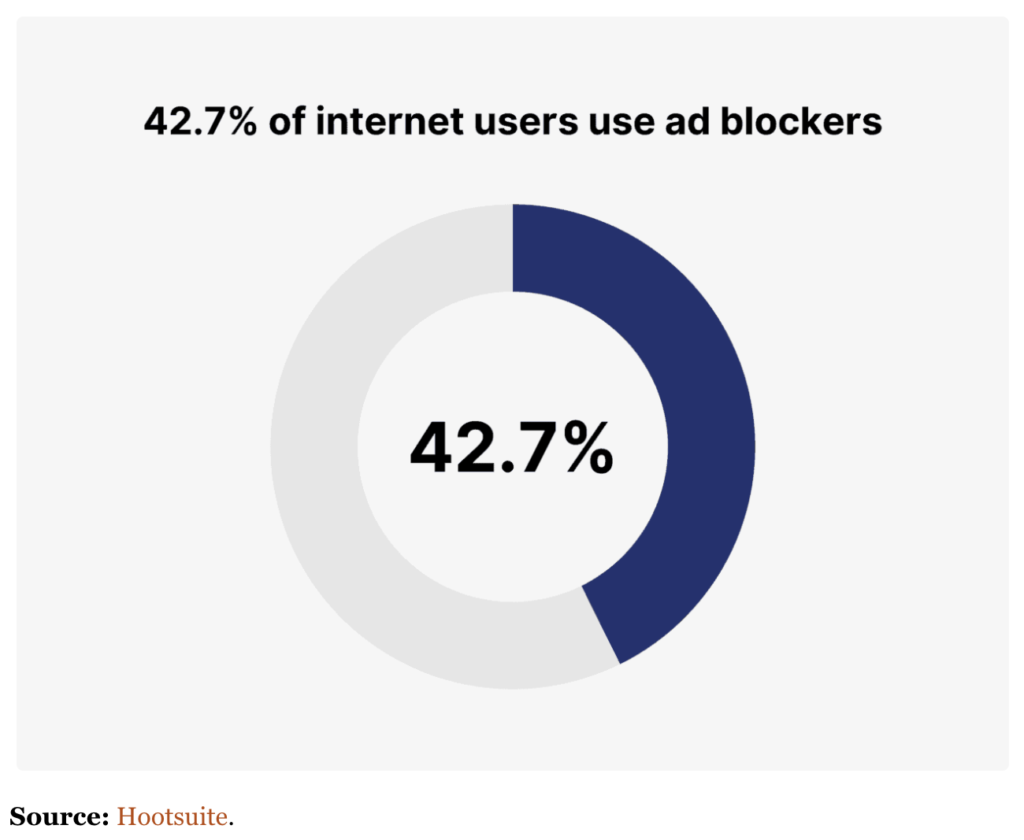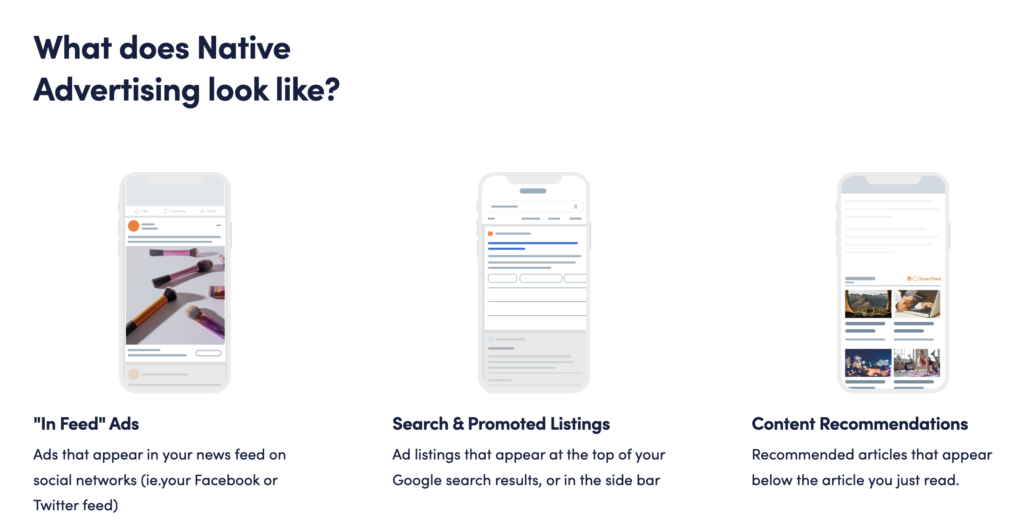Digital ads come with a negative connotation. Consumers often see them as intrusive, annoying, and irrelevant. While brands don’t want to add to the digital clutter of ads, they also struggle with brand visibility using organic strategies. Modern content placement options allow healthcare marketers to mix the authenticity and value of organic content with the increased visibility of traditional paid healthcare advertising.
Learn how customer behavior brought about content placement and how to use it in your healthcare content marketing.
Key Takeaways:
- Content can be organic and appear in searches naturally or paid, which gives you more control over its placement.
- Pop-up ads are falling out of favor due to digital oversaturation.
- Ad blockers don’t affect paid content placement and appear more natural to readers.
The 3 Types of Media Today: Owned, Earned, and Paid
Content marketers use three types of media in their strategies:
- Owned media is the content you create and publish on locations you own, like blog posts, website pages, and social media posts.
- Earned media, also known as organic media, is content you create that appears in other locations you don’t control, like on people’s social media feeds or searches.
- Paid media is content you sponsor and control where and how it appears on third-party channels.
Most of the content you create falls into multiple categories. For example, a blog post is owned media that can also be earned when it appears in searches. Over the past few years, there has been a shift in focus between ad formats as marketers adjust to the constantly changing behaviors of their customers.
Consumers Are Tired of the Digital Clutter
Consumers are constantly bombarded with digital clutter and have had enough. For example, 57% of consumers say they don’t like ads that play before videos, and 43% don’t even bother watching them. One estimate says the average person sees 10,000 ads a day.
Because of the oversaturation of promotional content, popups displaying giant product images and promoting deals are slowly becoming a strategy of the past. One of the main contributors to the death of the traditional advertisement is ad blockers.
About 43% of internet users have an ad blocker installed. These are tools that prevent popups or ad widgets from appearing on websites. The top reasons people used ad blockers included:
- They saw too many online ads
- They found the ads annoying or irrelevant
- The ads were too intrusive or took up too much space on their screens

Image from Backlinko
How Organic Search Transformed Marketing
Because of the decline in banner ad clicks and the downward trend of traditional advertising, marketers shifted to organic strategies. As a result, organic content marketing increased in popularity and helped marketers get around ad blockers and build greater trust with the audience. Through content marketing, you focus on the quality of your content and use search engine optimization to appear in your target audience’s searches.
Because you aren’t paying to promote your content, your audience sees it as more authentic and responds more favorably.
However, there was a problem. Nearly 97% of marketers started using content marketing in their business strategies. However, because of the large amount of online content, businesses struggled to get their message heard above the noise. By 2021, only 19% of companies said their content marketing efforts were very successful.
That’s when content placements started getting more attention.
The New Name for Marketing Ads: Content Placements
Paid content placements are marketing content you sponsor to ensure it appears at a specified location. They blend the best of content marketing with the visibility of traditional ads.
For example, as users read through a blog post, they might see a list of related articles at the bottom of the page. However, those articles might be sponsored content from other sites.
Consumers respond well to paid content placement because it doesn’t have the strong sales push of traditional ads. Instead, it’s regular content you might see in a Google search. However, instead of waiting for customers to find that content, you pay for it to appear where you know your customers frequently go, and it blends in with the content around it.
You might also sponsor your content to appear on social media feeds, Google searches, or other locations where it feels like the content around it. Content placement that blends into the surrounding is called native advertising. Native ads will earn a $402B annual revenue by 2025.

Image from Outbrain
How To Use Content Placements in Healthcare Marketing
Use these three steps to help you create a paid content placement campaign that replaces your traditional advertising.
Step 1: Establish an Advertising Goal
Whether using traditional advertising or paid content placement, your goals are the same. You want to educate, convince, and convert your customers. However, content placement is more subtle in how you accomplish that goal.
Establish what your objective is and how you will measure your success. For example, are you aiming to generate leads, make sales, or increase website traffic? Make a specific and measurable goal to guide your content placement campaign and tell you how well you performed.
Step 2: Create Marketing Content
Content marketing in 2022 focuses on building a relationship with your customer. You don’t just want a single sale, which is often the primary objective of traditional ads. Instead, you want to create a longer content piece that offers value to the customer, builds trust, and encourages customer loyalty.
Some examples of effective content for paid placement campaigns include:
- Thought leadership articles
- News releases about company updates or product launches
- Case studies
- Pieces about the latest trends in healthcare
Step 3: Target Your Content Placement
Because ad blockers still exist, you won’t see many results if you distribute your content through traditional digital advertising channels. It would also lose some credibility.
Instead, consider using a native advertising strategy to place your content where your ideal audience sees it. Some examples include:
- Paid search
- Social media-sponsored content
- Paid content placement on third-party websites
- Influencer marketer channels
- Digital or print magazines
Strategically Place Your Marketing Content
Are you having difficulty getting readers in the healthcare industry to notice your content above the oversaturation of digital marketing?
Talk to us about content placement opportunities and get your content in front of your target audience in healthcare.